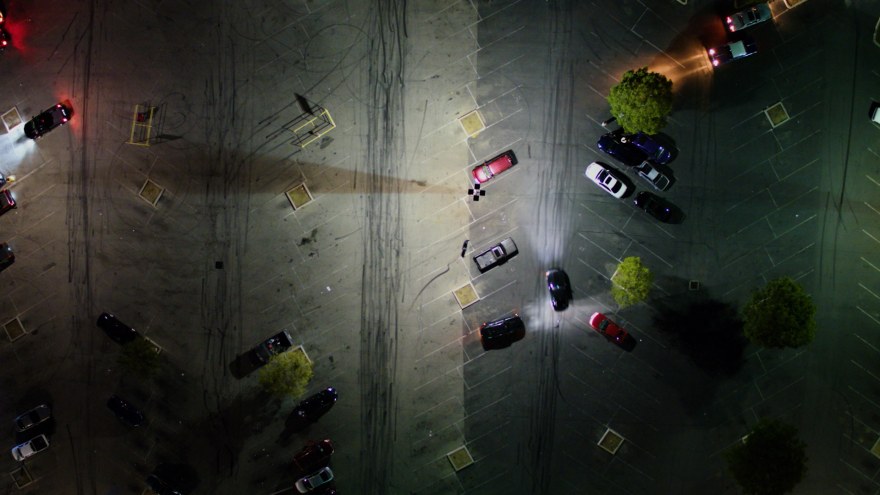Breakfast with How to Breathe in Kern County
Interview with Chris Filippone, director of How to Breathe in Kern County
Where did you shoot? How did you select and find your film locations?
I shot primarily in California’s southern San Joaquin Valley, mainly in the dusty, agricultural region of Kern County and the city of Bakersfield. This region reflects an image of California that most people never encounter, lacking the beaches and palm trees so emblematic of peoples’ vision of California. Most of my experience during pre-production was just driving around for days looking at different landscapes and speaking to people who live within those spaces. From there, I eventually stumbled upon a vegetable stand and asked the guy working there: “What do people do for fun around here?”. He replied: “We street-race every saturday night.” After attending the street races, I knew that this was somehow filmic territory.
How much are you inspired by the gap between earning a living and actually living? Do you have further projects on this issue?
I’m definitely interested in this idea and in particular, the feeling of what it means to feel free. And I don’t necessarily mean freedom in an acquisitive sense, as in the freedom to acquire or do something, but freedom in an inverted sense – like freedom from something. And in this case, it’s about the intimate feeling of catharsis after a backbreaking week working in the fields, auto-shop, or bagging and selling produce. I am currently finishing a film about the daily release of parolees from a prison in Texas, capturing their first moments out in the “free world,” which tend to be more complicated and emotionally complex than expected. It’s definitely a theme I find myself going back to.
How did you write the voice over?
When I am in pre-production, driving around and talking to people, I take extensive notes of the things people say. Like an editor, I look at these snippets of language and play around with them to find some commonality of experience and ways that they can articulate feelings. As I began doing this, my associate producer Erin Kökdil put me in touch with two Guatemalan migrants working in the region who were interested in participating and we took these written words and had them perform a voiceover of them. So, the process of writing voiceover was a little unorthodox, more of a process of finding the language than traditionally composing it. In this way, it is collaborative in an unconventional sense.
Weren’t you interested in recording people from the footage talking about their daily and/or nightly life?
There is a tyranny in the documentary form, mostly in the U.S., of using an interview-b-roll approach to non-fiction. That method is useful for delivering information but lacks an artistic or aesthetic perspective that is necessary for trying to access a deeper space beyond people’s overt and basic thoughts. In this way, through the process of spending time in this region, with the street racers and people you see in the film, I was able to find a channel through which their experience might express itself, in a form that maybe doesn’t work to educate, but rather transmit a feeling. This to me is most important.
Would you say that the short film format has given you any particular freedom?
The short film format definitely allows for a higher level of experimentation that you might not be able to achieve over the span of a feature film because it would be difficult to hold an audience’s attention. In this way, short films can offer a vision of the world that is wholly new and different without having to rely on traditional methods of story. For me, this is why the short format is so interesting as I can rely on other artistic elements than story to explore a particular subject matter.
What are your reference works?
For this film, I was definitely interested in a variety of different works, but mainly the short films of Pablo Briones who manages to create such a strong sense of place and space in his films A Barca and On the Edge of Lisbon. Martin DiCicco’s film All that Passes by through a Window that Doesn’t Open is always a constant inspiration for me as well, especially by focusing on work and labor in a way that gets to the implicit nature underneath the physical. I’m also interested in a lot of sensory ethnography work and the ways in which layers of sound can create an almost musical quality to the feeling of a film.
How to Breathe in Kern County is part of Lab Competition L4.








